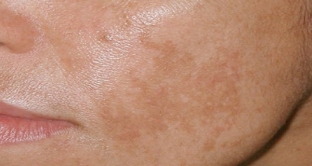The treatment of pigmentation is a difficult and lengthy process, which is accompanied by many restrictions for the patient, upsets by periodic recurrences of age spots and does not always allow you to completely get rid of them. When a patient asks their esthetician for their opinion on hydroquinone preparations, the effectiveness of which is widely reported on the Internet, the doctor should explain to the patient all the risks of using such preparations. Consider these risks with estet-portal.com.
A bit of the history of hydroquinone use
Hydroquinone, or para-dihydroxybenzene, is a dihydric phenol that can also be found in nature – for example, hydroquinone contains bearberry leaves, pear or sugar cane shoots. Its molecules are very small and active, they easily and quickly penetrate into tissues both when swallowing a substance with hydroquinone and when applied to the skin.
Hydroquinone was originally used in photography as a component of developing agents. A little later, he found application in medicine – as an antiseptic and antipyretic, antioxidant.
However, studies soon showed the high toxicity of hydroquinone, and it was quickly withdrawn from medical use.
But in cosmetics, it continued to be one of the most popular ingredients with whitening properties.
What is the basis for the whitening properties of hydroquinone
The mechanism of action of hydroquinone as a whitening component lies in its ability to block the conversion of the amino acid tyrosine into melanin. As a result, the synthesis of melanin pigment stops, namely, it is responsible for staining the skin in a dark color.
It is forbidden to use hydroquinone in cosmetics in European countries. It is possible that a similar ban will soon appear in the United States, but for now there are restrictions on the duration of the use of cosmetics with hydroquinone. & nbsp; Moreover, you can only buy products that contain up to 2% hydroquinone, and if the preparation contains 2-4% of this substance – the drug must be prescribed by a doctor. What is its danger?
Even small concentrations of hydroquinone, if used for a short period of time, can completely destroy melanocytes in the skin area where the bleaching agent has been applied.
The cytotoxic effect of the use of hydroquinone can occur in 8-9 weeks of using the drug with its content, and sometimes even earlier. Recall that melanocytes react to the damaging effects of ultraviolet radiation and prevent unpleasant consequences from it for the skin. If the skin has lost melanocytes, ultraviolet rays can penetrate unprotected skin, damaging the DNA apparatus of the cells and provoking their malignant transformation.

Properties of hydroquinone that may be harmful to the skin
According to numerous studies of the properties of hydroquinone, this substance itself can increase the risk of developing cancer, the liver, kidneys, and thyroid gland are at risk. Hydroquinone is especially dangerous if it gets into the eyes: pigmentation of the eyes may develop, the cornea can be damaged, so cosmetics with hydroquinone should not be used in the area around the eyes.
- Dyschromia – a consequence of the use of preparations with hydroquinone, when its color changes on large areas of the skin, and in some cases a white spot is formed that remains forever.
- Ochronosis – Another complication after the use of preparations with hydroquinone, in which the skin turns yellow, acquires a grayish or even bluish tint. This pathology is always accompanied by the destruction of collagen and elastin fibers, skin atrophy. There are no effective ways to treat ochronosis, laser procedures can only slightly improve the condition of the skin.
Before carrying out cosmetic procedures, the patient should be asked if he uses products with hydroquinone, because they greatly increase the sensitivity of the skin, thin and destroy its protective layer, and hinder healing processes after traumatic procedures.
It is important to warn a patient who insists on fighting pigment spots with hydroquinone preparations that after lightening the skin with them, it can be very difficult to maintain the result. It is worth stopping using the drug, as after a few weeks the pigmentation returns.







Add a comment